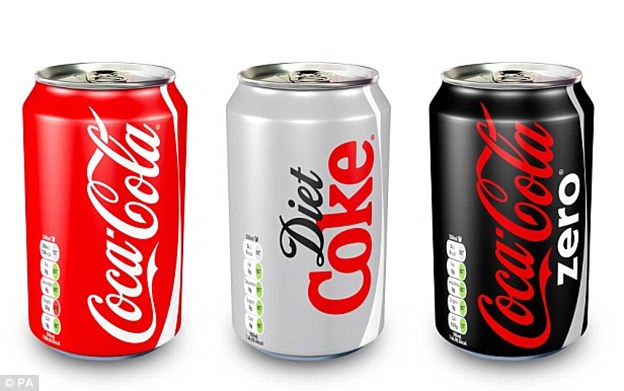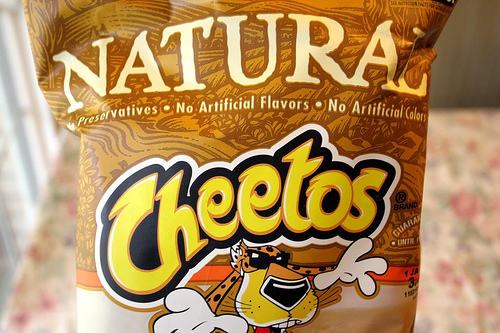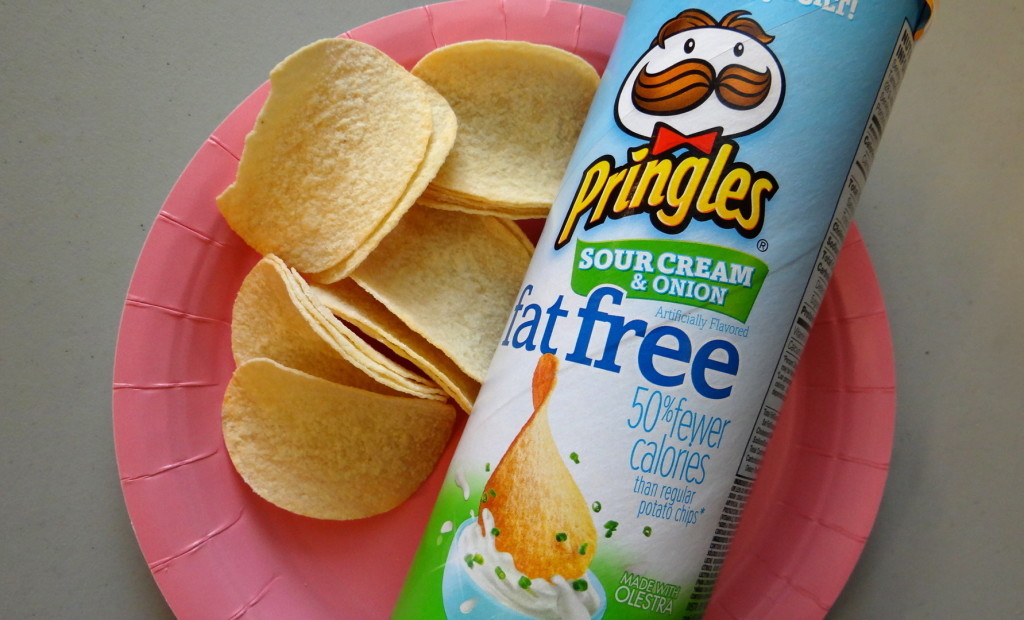In the past couple years, the idea that “food marketing is making us fat” has been a hot topic. The usual argument revolves around the idea that junk food is so heavily and strategically marketed, it makes it almost impossible for us to escape. Actually, junk food is not the only category of food marketing that fools the consumer. In fact, the consumer who is trying their best to be healthy is being easily fooled by products that are marketed just to appear nutritious. Which is the worse evil?

GIF courtesy of giphy.com
To be fair, we first have to be a bit understanding to the food industry and its success. Food marketers are constantly struggling between pleasing the consumers needs, upholding public health organizations wants, and arranging the supply and demand of their product(s).
As a part of the dog-eat-dog American economy, the goal of any company is to make money which is why we can not rely on the corporation itself to supply us with honest, healthy food. Instead, we have to educate ourselves in order to avoid being fooled by false labeling.
Let’s take a look at some tricky catchphrases we see on the run-of-the-mill packaging labels. Among many, the most deceiving labels we see are, “sugar-free,” “natural,” and “low-fat.” Instinctively, seeing these words already makes us feel that what we are about to buy is healthy, but what do these devious words truly mean?

GIF courtesy of giphy.com
1. Sugar-Free

Photo courtesy of dailymail.co.uk
When we choose the sugar-free option of a drink or snack, what we don’t realize is that our body is being fooled. While the product may truly be sugar-free, that usually means it is loaded with artificial sweetners as a subsititute. While artificial sweeteners, like “Equal” and “Splenda,” have almost no calories, research shows that they trick your brain into assuming that it will be receiving calories like it does from natural sugars. When the calorie expectation is not met, your body does not reach saeity and continues to seek more food.
2. Natural

Photo courtesy of cbsnews.com
“Natural,” seriously, what does that even mean? As it turns out, the FDA can’t even define it. Food and beverage companies are allowed to label their products as “natural” without the FDA having any defining factors or guidelines as to what that entails. The FDA is currently asking the public to comment on the issue, asking us “whether it is appropriate to define the term natural.” Yeah, it’s probably fairly important.
3. Low-Fat

Photo by Lara Schwieger
When you come across a low-fat option – it’s almost a no-brainer – you are going to automatically assume it’s the better choice. However, when companies lower fat content, they fill the void with additatives like sugars, and sodium.
Let’s take a look at a fan favorite: reduced fat peanut butter. According to Eating Well, the additives used in place of fat increase not only the sugar quantity, but also doubles its total carb and sodium content. More generally, Cornell University’s Food and Brand lab has also proven through three studies, that snack foods labeled “low-fat” result in people eating up to 50% more. Just seeing the label “low-fat” fools the mind and allows you to eat more.

GIF courtesy of giphy.com
Fascinatingly enough, low-fat foods make us eat more, sugar-free foods make us ravenous for carbs of any kind, and we are still here wondering what “natural” even means – we are doomed. Unfortunately, numerous other buzzwords such as organic, diet, and low cholesterol have their Achilles heel as well. In the food marketing industry, nothing is as it seems. The ability to make healthy choices is made difficult for consumers because of the lack of transparency in the marketing industry.


